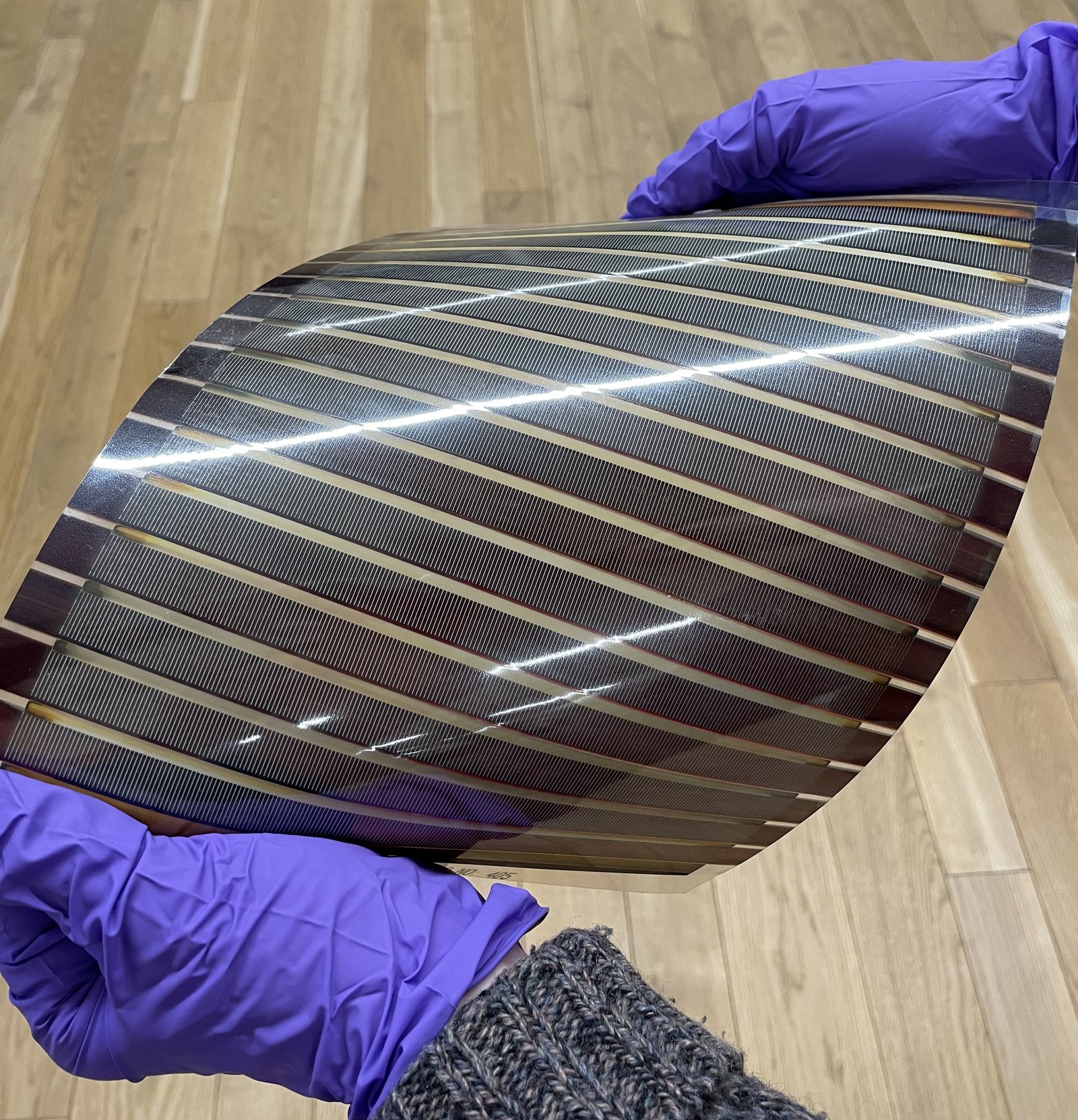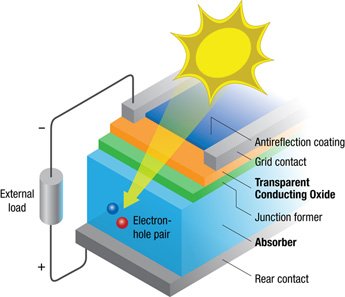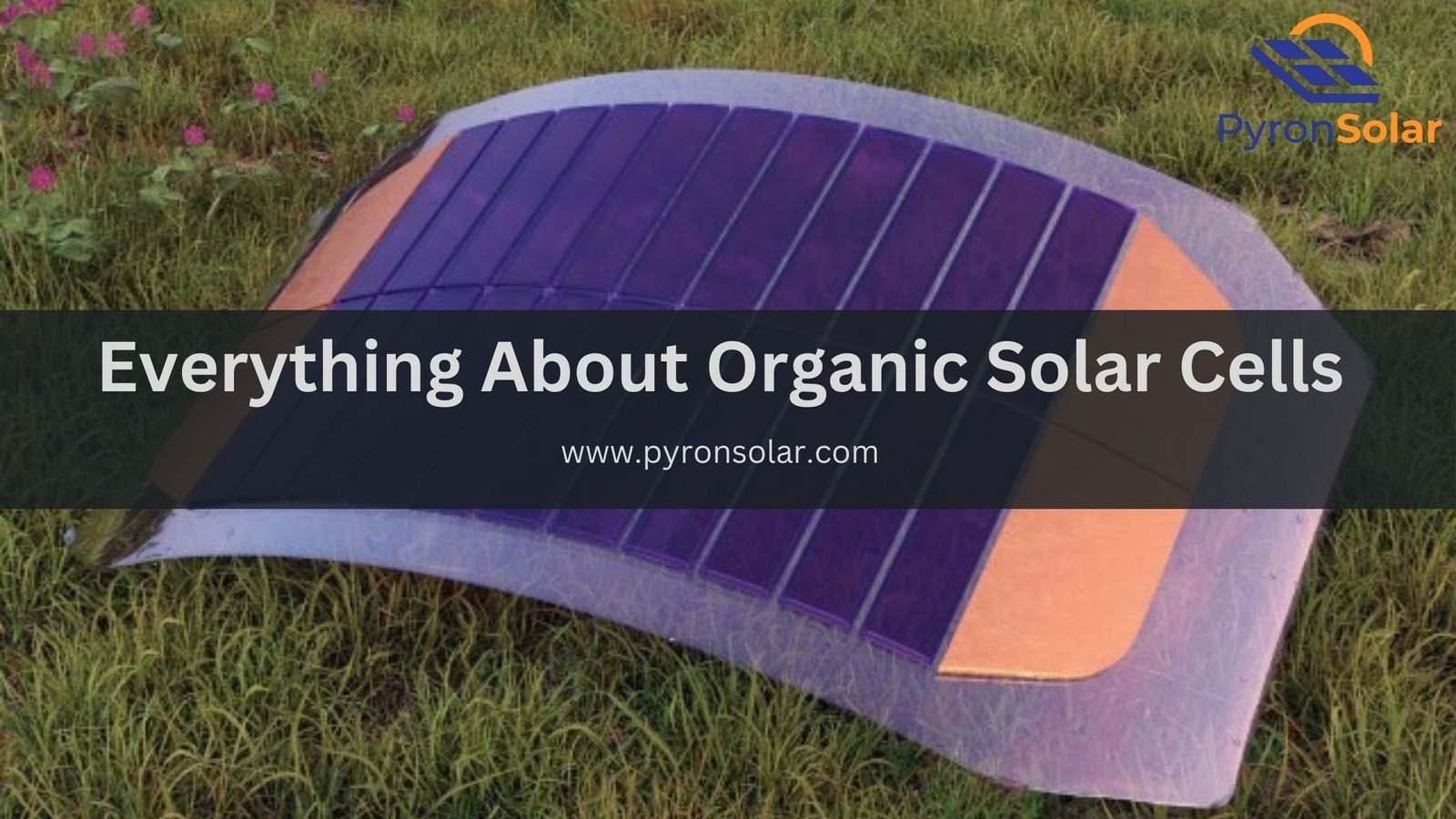Solar cells convert the sunlight to electrical energy through the photovoltaic effect. These silicon cells have different conversion efficiencies and play an important role in generating electricity in remote environments and powering machines from the closest electrical outlet with high durability, compactness and low maintenance.
The various types of solar cells begin with the first-generation PV cells, which include Crystalline (Monocrystalline and Polycrystalline), and the second-generation such as thin film (CIGS, CdTe, and Amorphous Silicon). The third-generation solar cells include Organic, Perovskite, Quantum dot, etc.
Typically, organic solar cells, also known as plastic solar cells, use organic materials like polymers and small molecules to absorb sunlight and convert it into electricity through the photovoltaic effect.
By the time you complete your journey through this article, you will explore how organic solar cells work the difference between crystalline solar cells and their development in technology. Also, solar panels with organic solar cells could be purchased.
Further, we will explore in detail whether these lightweight and flexible organic solar cells will Lower production costs and provide an abundance of manufacturing materials. Also, factors such as Reduced Energy Payback Time, Lower Efficiency, and Shorter Lifespan play a major role in providing a better analysis of organic solar cells’ pros and cons.
What are Organic Solar Cells?

Organic solar cells are a new technology that deals with organic electronics- a branch of electronics that deals with conductive organic polymers or mini-sized molecules to produce electricity using carbon-based materials. It is also known by various names such as “plastic solar cells” or “polymer solar cells”.
How do Organic Solar Cells work?
Organic solar cells work in the same way as traditional PV cells that convert sunlight into electricity through the photovoltaic process by additionally involving organic electronics by undergoing these stages:
First Stage: Organic solar cells absorb sunlight in the form of small bunches known as “photons”.
Second Stage: When these photons break, the loose electrons are released, commonly called “holes”.
Third Stage: These loose electrons flow throughout the solar cells and the electric current is generated through charge carriers.
Fourth Stage: The captured electric current gets transferred to the solar inverters, which in turn converts the DC into AC power for residential use.
Pros of Organic Solar Cells
There are several pros of Organic solar cells you need to know, such as:
- Lightweight and Flexible
- Lower Production Cost
- Abundance of manufacturing materials
- Reduced Energy Payback Time
Knowing the advantages of OPV solar cells can create awareness about reducing the carbon footprint and environmental impact.
Lightweight and Flexible
Organic photovoltaic solar cells are lightweight and flexible because of the molecular structure of organic materials that allows them to bend or stretch without breaking. As a result, it can be used to integrate into building materials like windows and walls, portable chargers, wearable devices and clothing.
Lower Production Cost
The production cost of organic cells ranges between $50 and $140 per metre square, which is lower compared to the standard ones between $100 and $200 per metre square, approximately. However, both organic and conventional solar cells cost $0.50 and $1.50 per watt.
Abundance of manufacturing materials
Organic polymers or small molecules in solar panels are made of electron donor and electron acceptor materials to form a heterojunction during the electron transfer, which results in a lower cost of manufacturing materials and a higher abundance of production. The non-toxic materials and solvents require lower energy during manufacturing, resulting in emitting less greenhouse gases, thereby having a lower effect on the environment when compared to traditional solar cells.
Reduced Energy Payback Time
The Energy Payback Time (EBPT) for organic solar cells is quite low with 1 to 2 days than the standard PV cells of 2 to 3 years. For instance, the OPV solar cells have an efficiency of 2% of EPBT in terms of months.
Cons of Organic Solar Cells
On the other side, there are a few cons of organic solar cells, such as:
- Lower Efficiency
- Shorter Lifespan
Understanding the disadvantages of organic solar panels helps to set realistic expectations with a planned budget.
Lower Efficiency
Organic solar cells have lower efficiency due to their higher bandgap, lower stability and strength, and recombination of electrons and holes before generating electricity.
Shorter Lifespan
The lifespan is nearly about 20 years, which is shorter than the traditional ones with 25 years due to the exposure to moisture and oxygen. However, the OSCs are highly durable due to their higher performance, lower weight, adaptability, and ability to absorb sunlight.
Crystalline Solar Cells vs Organic Solar Cells: What is the Difference?
Here is the detailed difference between Crystalline and Organic solar cells tabulated below by considering these factors:
| S. No | Factors | Crystalline Solar Cells | Organic Solar Cells |
| 1. | Materials Used | Semiconductor materials like silicon | Carbon-based compounds like polymers or small molecules |
| 2. | How they are made | Interconnected to form a crystal lattice | Compounds dissolved into ink and printed onto thin plastics |
| 3. | Functioning | Generates electricity through photovoltaic effect | Generates electricity through photovoltaic effect involved with organic electronics |
| 4. | Efficiency | 25% | 19 to 20% |
| 5. | Output | Higher | Lower |
| 6. | Durability | Retains 85% of output after 25 years | Less than 30% degradation in 2 months when exposed to harsh climatic conditions |
Overall, crystalline solar cells are widely used in residential, commercial and utility-scale solar installations due to their high efficiency and longer lifespan and appear to be the best choice. On the other side, though organic solar cells aren’t widely used, it is still preferred due to lower production costs and flexibility.
Developments in Organic Solar Cells Technology

Image Source: NREL Transforming Energy
Recent developments in organic solar cell (OSC) technology have shown impressive progress towards stronger efficiency, greater sustainability, increased stability, and unique functionality. These developments promise a better future of clean energy.
One of its development. A milestone achiever is the single-junction OSCs that have reached a record-breaking 20% conversion efficiency (PCE).
In comparison to the traditional silicon solar cells, Organic Solar Cells have successfully advanced in energy conversion capabilities using advanced materials like non-fullerene electron acceptors (NFAs) and wide-range electron-donating materials along the most efficient device structures.
Here are some of the major developments of organic solar cell technology in the year 2023:
March 2023: Discovery of making organic solar cells efficiently using computer simulations, by changing donor material’s shape.
April 2023: Researchers have revealed the reason for organic solar cells’ rapid degradation during operation. More stable materials are to be used in upcoming organic semiconductor-based photovoltaics.
June 2023: 19.31% power-conversion efficiency (PCE) was achieved with organic solar cells (OSCs). Also, OPV cells have more than 19% efficiency.
September 2023: Discovery using organic dyes for the exciton transport highways to be created.
Can I Buy Solar Panels with Organic Solar Cells?
According to the reports obtained till December 2023, organic solar cells are not yet available commercially.
A few companies have been producing it to use them in pilot projects. Here are the companies that produce Organic solar cell panels:
- Heliatek
- Nanoflex Power
- Sunew
- SolarFarmer Energy
- Nanoflex
- Plextronics
- Solivus
- Dracula Technologies
- SunPower
- Armormpany
- InfinityPV ApS
- Epishine
- New Energy Technologies Inc
These companies produce organic solar cell film which can be put onto glass and building exteriors.
As of now, there are 4 major types of solar panels available in the market, namely:
Also, there are other types of solar panels such as — Transparent solar panels, Hybrid solar panels (a mix of amorphous and monocrystalline cells) and Bifacial (13% more efficient compared to mono facial panels).
Ray is an avid reader and writer with over 25 years of experience serving various domestic and multinational private and public energy companies in the USA.

